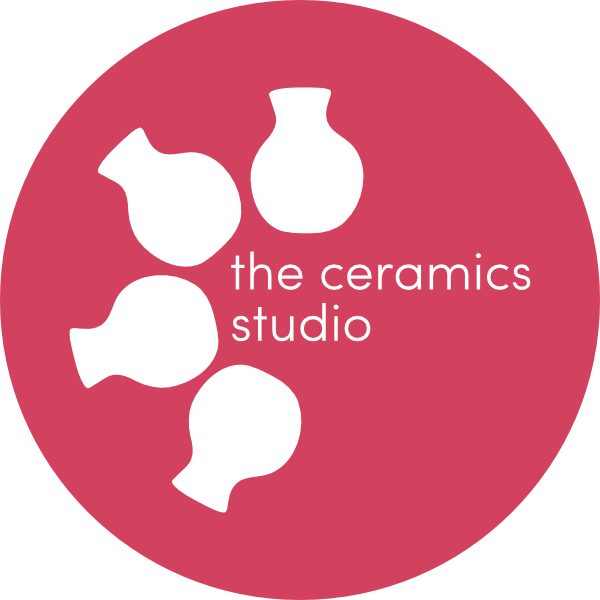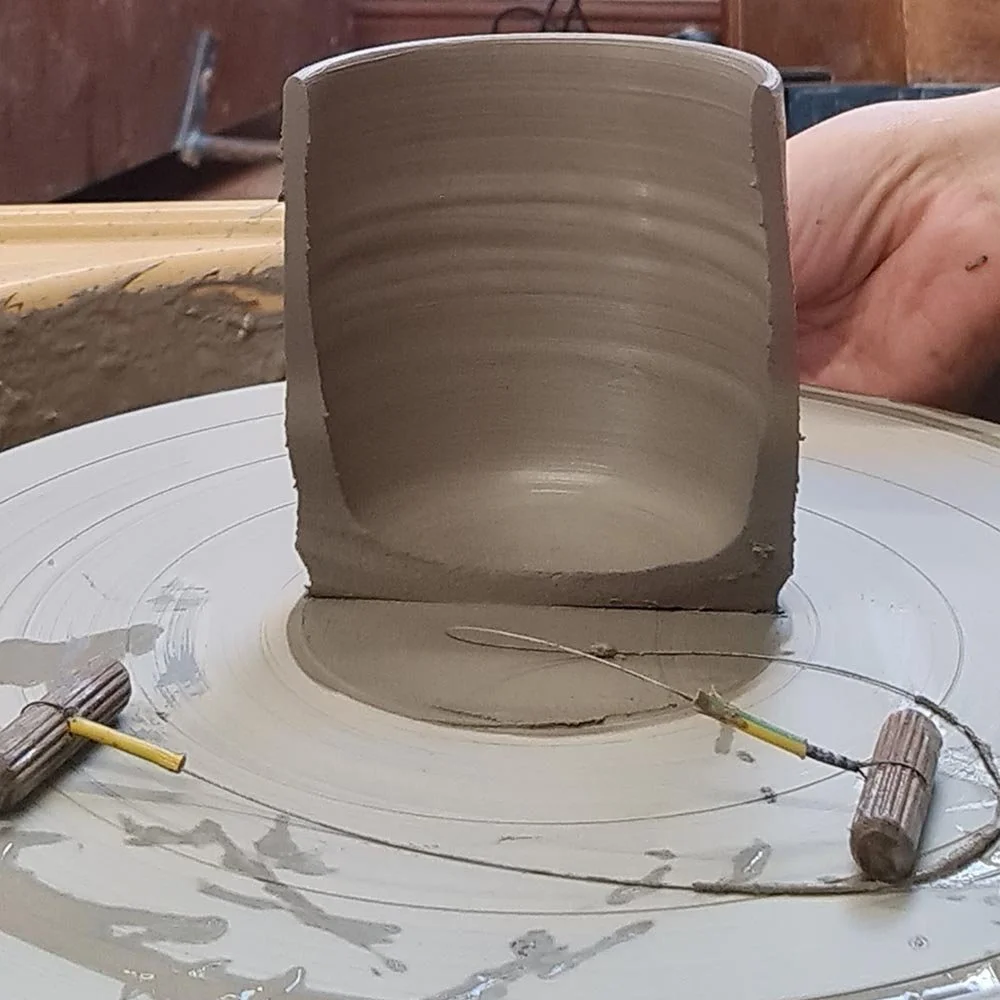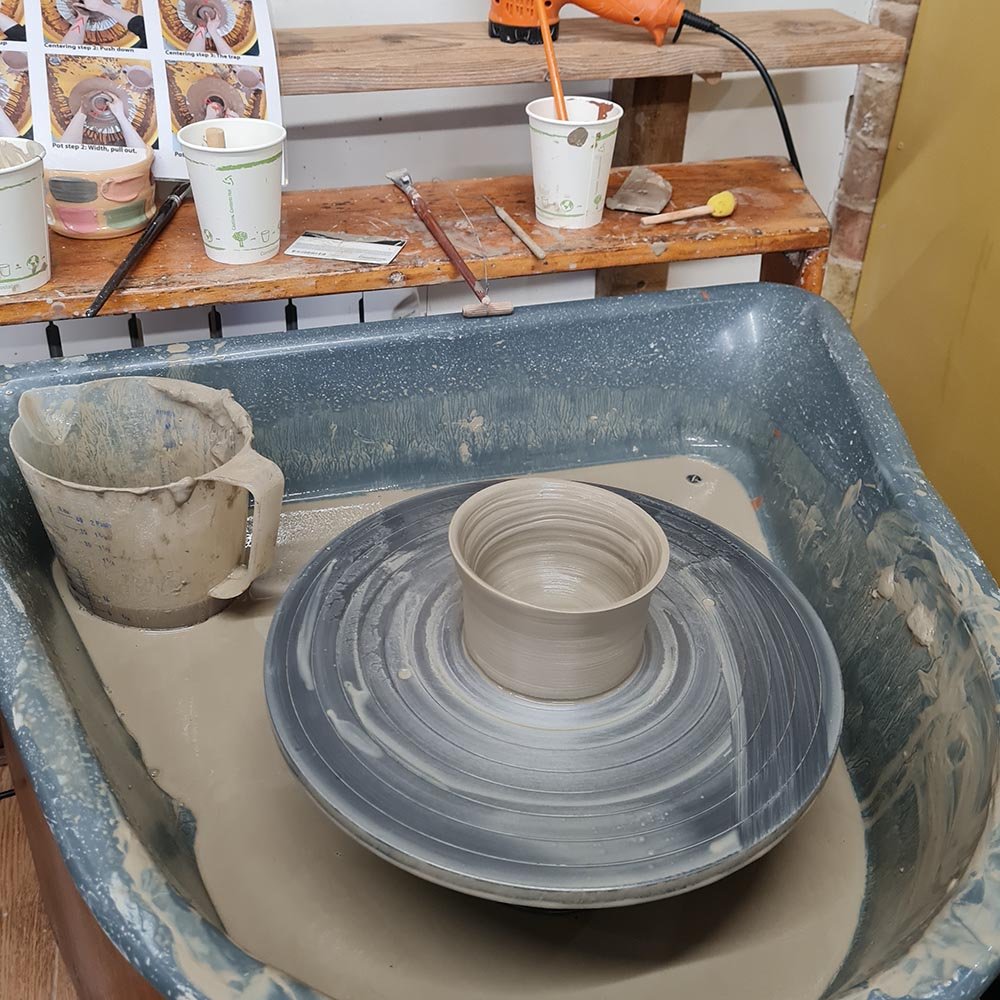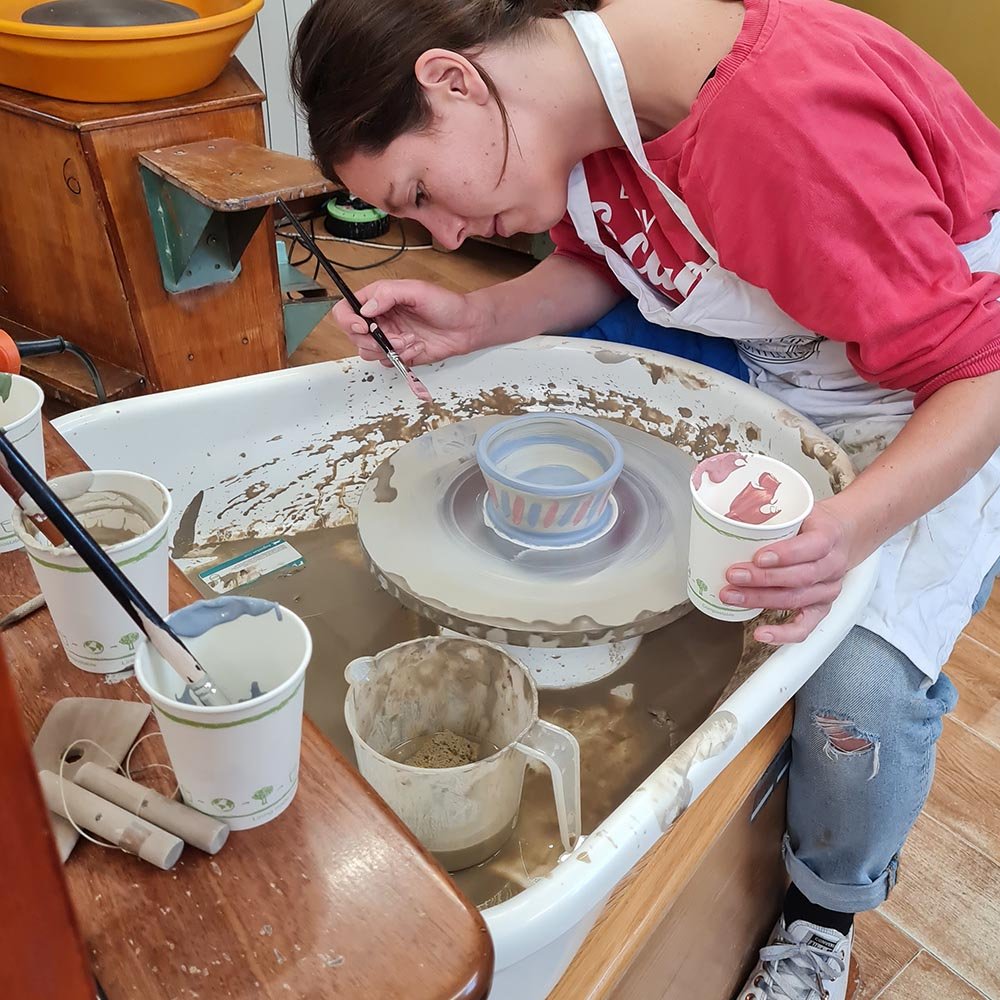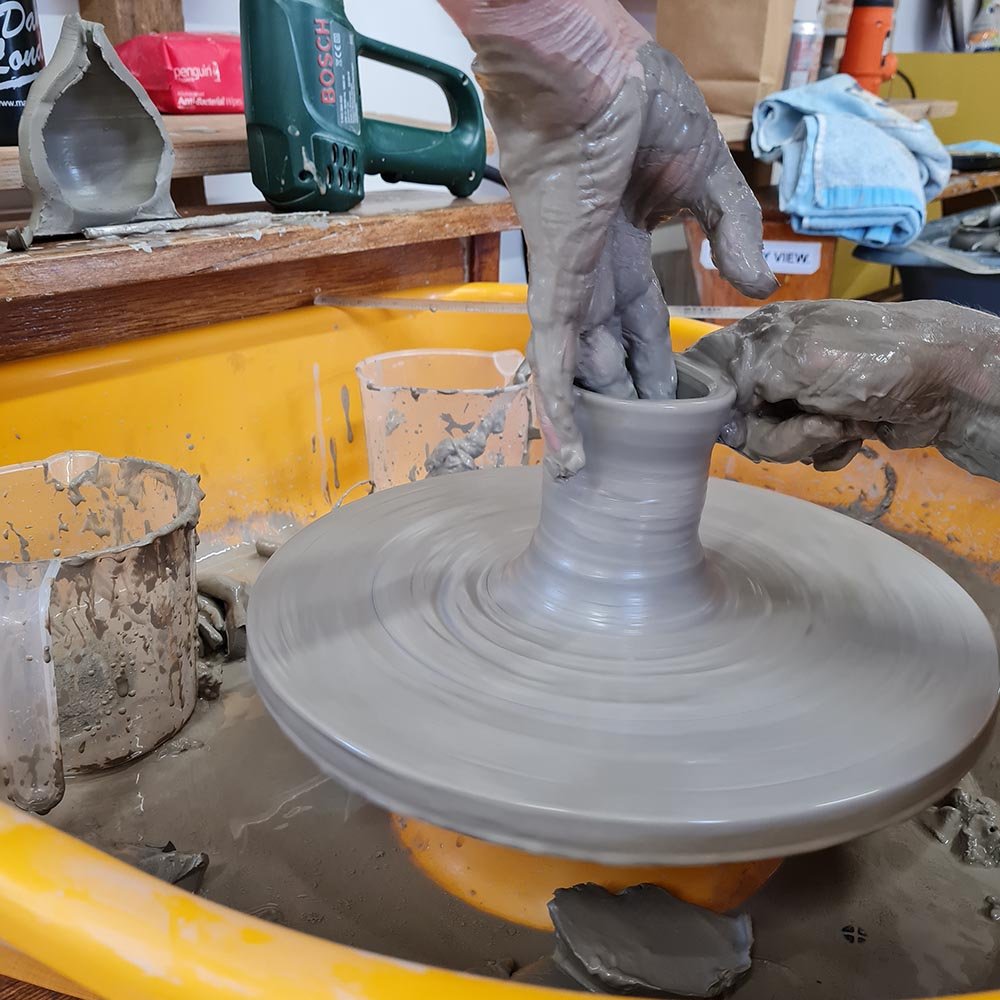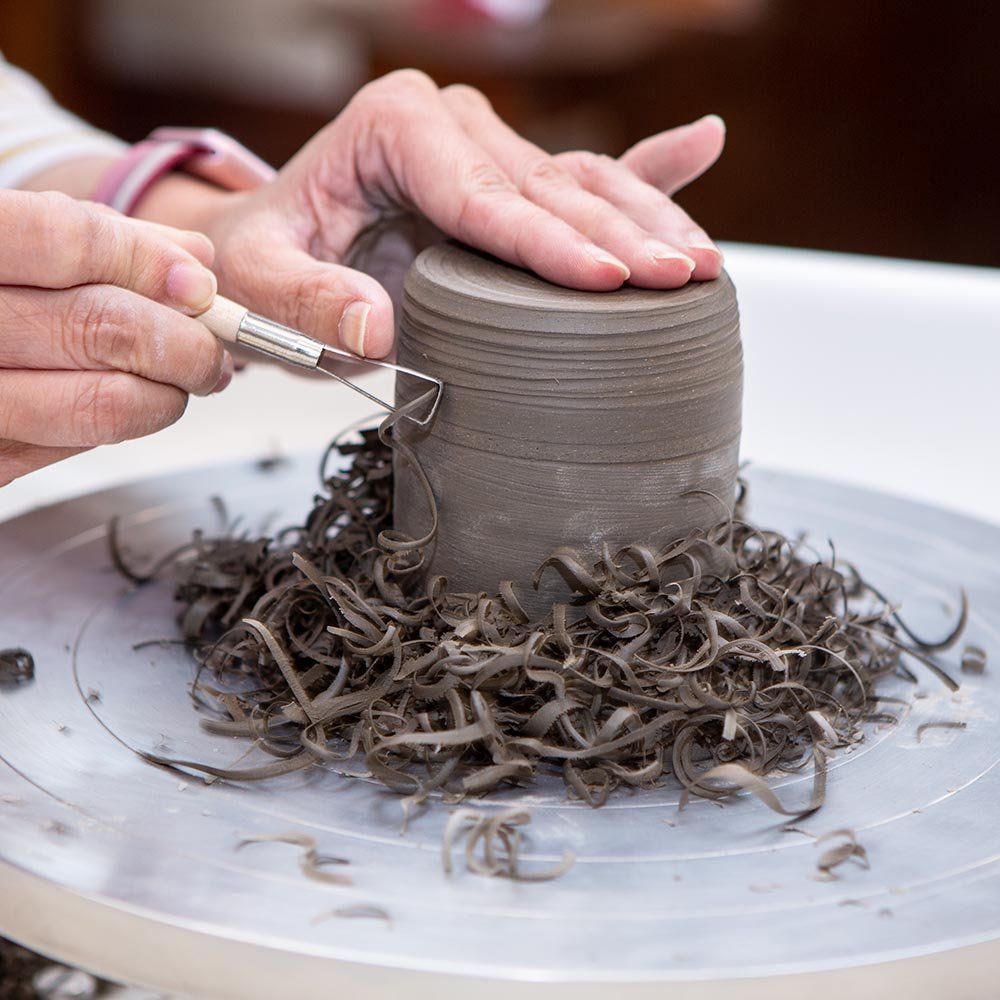Pottery Reuse & Recycle - Everlasting Clay
“What do you do with all the buckets of used clay ?”
You cannot learn to throw without making a few mud pies!
This is one of the most common questions we get asked here at the studio. After any throwing or handbuilding workshop we end up with buckets filled with clay trimmings and those pots that didn’t quite make it. Students sometimes apologise for making buckets of “slop”.
““Sorry! I am wasting your clay!””
Well never fear, all of those buckets of clay can be recycled and I believe from every piece of clay that you put in the bucket, as frustrating as it can be, you have learnt something from it and it helps you to continue developing your skills and understand clay and its management.
We encourage quality control and looking at the pots profile.
We take all those buckets of clay and put them through a process known as recycling, to bring the clay back to a state that can be used again to make more pots. The buckets of clay are covered in water and left for a period of time to allow all of the clay particles to become the same consistency.
After a period of time the clay and the water starts to separate with the clay sinking to the bottom leaving the water at the top of the bucket. We gradually drain the water away from the clay until the clay is like a thick “porridge” like consistency. We then spread this soft clay out onto a ceramic plaster of Paris batt. The batt absorbs the water from the clay until it becomes more solid.
Gaye is mixing the clay in to a perfect porridge
When the clay is a much firmer texture on the batt we peel it off and then manipulate the clay into a unified, even, air free texture, this process is known as “wedging”. It is very important that the clay is wedged as it removes any air pockets within the clay, as this could have a disastrous effect in the kiln as the air would expand and blow out of the pot ! Wedging also has the effect of loosening up the clay getting the clay particles moving which does help when you are throwing.
Clay porridge drying out on batts
Once the clay has been wedged it’s wrapped in plastic to keep the moisture in, stored in an airtight box and left to rest, which will improve the clay's plasticity; which will make it more suitable to throw with.
Wedging - good for upper body strength!
Clay can be repeatedly recycled, which makes it an amazing creative material.
I’d like to let you into a secret ….recycling clay is my favourite process to do in our lovely studio. It gives me a bit of a workout and I think it is just amazing that all that wasted clay can be brought back to a state ready for making more beautiful pots.
Happy Potting!
Gaye x
